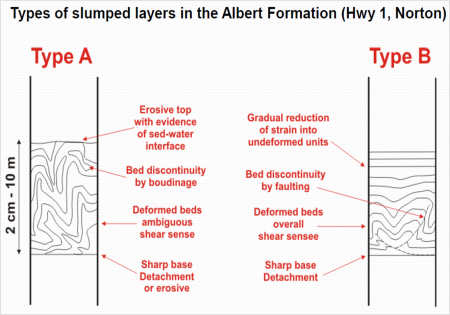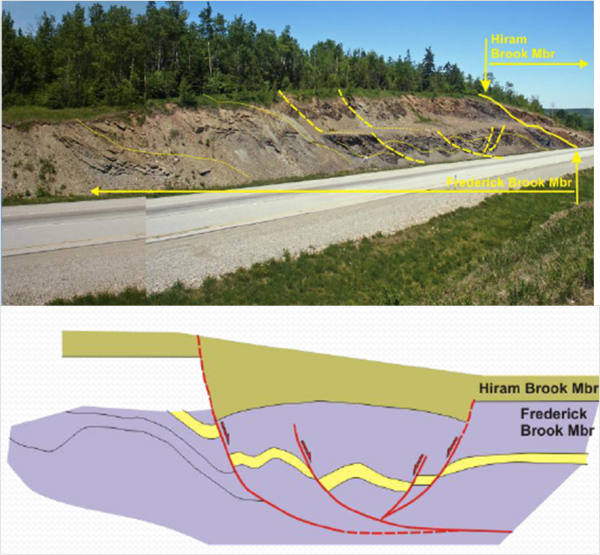Unstable at any scale
/Studying outcrops can be so valuable for deducing geologic processes in the subsurface. Sometimes there is a disconnect between outcrop work and geophysical work, but a talk I saw a few weeks ago communicated nicely to both.
At the 37th Annual Colloquium of the Atlantic Geological Society, held at the Fredericton Inn, Fredericton, New Brunswick, Canada, February 11-12, 2011, Adrian Park gave a talk entitled:
Adrian Park, Paul Wilson, and Dave Keighley: Unstable at any scale: slumps, debris flows, and landslides during deposition of the Albert Formation, Tournaisian, southern New Brunswick.
He has granted me permission to summarize here his presentation, which was one of my favorites talks of the conference.
The Moncton Subbasin, which hosts the Windsor Group potash we visited last week, was subject to strike slip faulting throughout most of its history. The tight gas bearing Hiram Brook and shale gas bearing Frederick Brook Members of the Albert Formation are the stratigraphic intervals covered in this study.
Through surface maps, outcrop, and seismic measurements, Park identified two fundamentally distinct types of of slumping in the Frederick Brook. Type A consists of smaller scale deformed beds with an ambiguous shear orientation, and Type B consists of rotational slides. Type A ranges from ~0.2 to ~50 m in thickness, interpreted as syndepositional failure due to intrinsic weakness of a water-, clay-, and organic-rich sediment. After this initial stage of deformation, a metastable state is created by dewatering. Type B ranges from ~1 to ~1000 m in scale, interpreted as renewed collapse caused by rotational sliding brought on by loading with the overlying Hiram Brook Member sediments.
 Rights reserved, Adrian Park, University of New Brunswick
Rights reserved, Adrian Park, University of New Brunswick
Adrian demonstrated that not only did the two disparate slumping styles occur across a variety of scales, but they are each defined by a characteristic power-law relationship. Could such a mathematical description be leveraged to characterize these formations at the reservoir scale? Many of these packages are well below the limit of seismic resolution, but their influence on reservoir architecture may be profound. So perhaps we can use this power law relationship to extrapolate into the sub-seismic realm. When we have it, we start to see how outcrop can help us across the integration gap.
 Rights reserved, Adrian Park, University of New Brunswick
Rights reserved, Adrian Park, University of New Brunswick
Slumping and folding at a myriad of scales is coupled with extension and compressional faulting as shown in these diagrams. Large scale listric and antithetic faults can be mapped on seismic, but these features are morphologically tied to deformed beds typically below seismic resolution.
 Rights reserved, Adrian Park, University of New Brunswick
Rights reserved, Adrian Park, University of New Brunswick
One outstanding dilemma is the contradictory competency of the material with very low shear strength—why would it undergo plastic rather than liquid deformation. The answer likely has to due with high proportion of organic material.
For me, this research nudges towards an exciting multi-disciplinary spirit necessary to characterize and exploit the subsurface resources in this area.
We are very grateful to Adrian Park at the University of New Brunswick for sharing his presentation pictures for this post. The figures are his creations, any inaccuracies or omissions in the text are my own.








 Except where noted, this content is licensed
Except where noted, this content is licensed